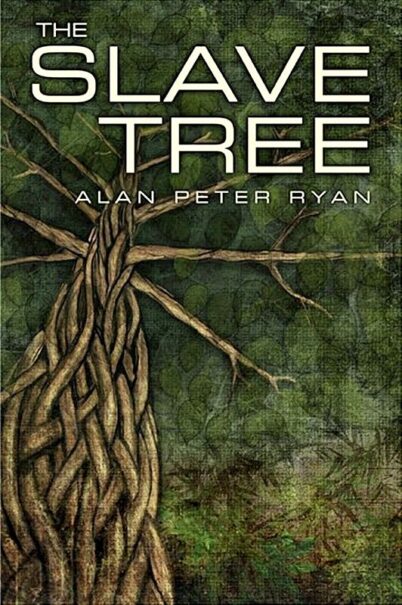 By ALAN PETER RYAN (Cemetery Dance; 2013)
By ALAN PETER RYAN (Cemetery Dance; 2013)
A novel that’s interesting enough to make me wonder why it was published solely in limited edition hardcover format. As it turns out, THE SLAVE TREE apparently received a fair amount of attention upon its initial drafting in the late nineties, becoming a hot property in the literary world and Hollywood (where several top producers expressed interest in filming it). Yet apparently it was too unique, as no firm offers were made and the manuscript ultimately “had no future except a box in the closet.”
A novel that’s interesting enough to make me wonder why it was published solely in limited edition hardcover format.
That’s according to a nonfiction afterword written by the book’s author, the late Alan Peter Ryan (1943-2011). His output included four horror novels published in the 1980s and, in later years, a wealth of travel writing for various publications. THE SLAVE TREE, drafted in 1998, combined those two formats, offering descriptions of two trips Ryan took to Rio de Janeiro (trips that were fictional, although Ryan did in fact live out his final years there), dominated by a horrific narrative of the type in which he once specialized.
The major element is the so-called “Slave Tree,” a mysterious outcropping found deep in the Amazon, whose branches grow large pods containing human bodies. The discovery of the Slave Tree occurs in the second of the book’s three parts; this portion was actually published as the standalone novella AMAZONAS (2011), in which form it doesn’t quite work (as one online reviewer complained, it “feels like the first quarter of some larger tale”—the second third, actually).
The discovery of the Slave Tree occurs in the second of the book’s three parts; this portion was actually published as the standalone novella AMAZONAS (2011), in which form it doesn’t quite work…
The tree’s discoverers are Edwin, an enterprising idealist, and his wife Henrietta. Together with a questionable sort named Crown, they travel the Amazon in the year 1906, in search of fortune. Specifically, they’re looking for the Slave Tree, which Crown wants to use to corner the slave market. Their journey comes to encompass horror, murder and an oblique commentary on colonialism.
The above is a narrative Ryan claims to have based on fragmentary journal entries he finds, written by Henrietta. This occurs in the book’s opening third, detailing Ryan’s initial trip to Brazil as part of a magazine assignment. The faux-nonfiction gist allows him to comment on his many departures from conventional storytelling (“I decided to tell this story—this fiction, remember—as if it were a true story…It certainly does not absolve me of the need to make my story engaging and worthy of the reader’s time, but it lets me do the telling in different ways”), and also point out the many narratives his tale recalls (such as HEART OF DARKNESS and INVASION OF THE BODY SNATCHERS). Ryan also includes plenty of miscellaneous descriptions of this place he’d never been, which his experience as a travel writer helps render convincing.
…consistently lively and compulsively readable…
The third portion continues the account of Ryan’s misadventures in Brazil, with he, after a brief return to his NYC home, heading back to Rio de Janeiro to make his own search for the slave tree No fair revealing what comes of this, as it’s the book’s most exciting, plot-driven portion, with a necklace Ryan purchased early on coming in quite handy—and some foreign acquaintances along for the ride proving less than trustworthy.
The ending could admittedly be a bit stronger, but it doesn’t detract from a book that as a whole is consistently lively and compulsively readable. It deserves a much larger audience than it’s received, and hopefully this posthumously published 2013 publication, limited though it was, will rectify that neglect.
